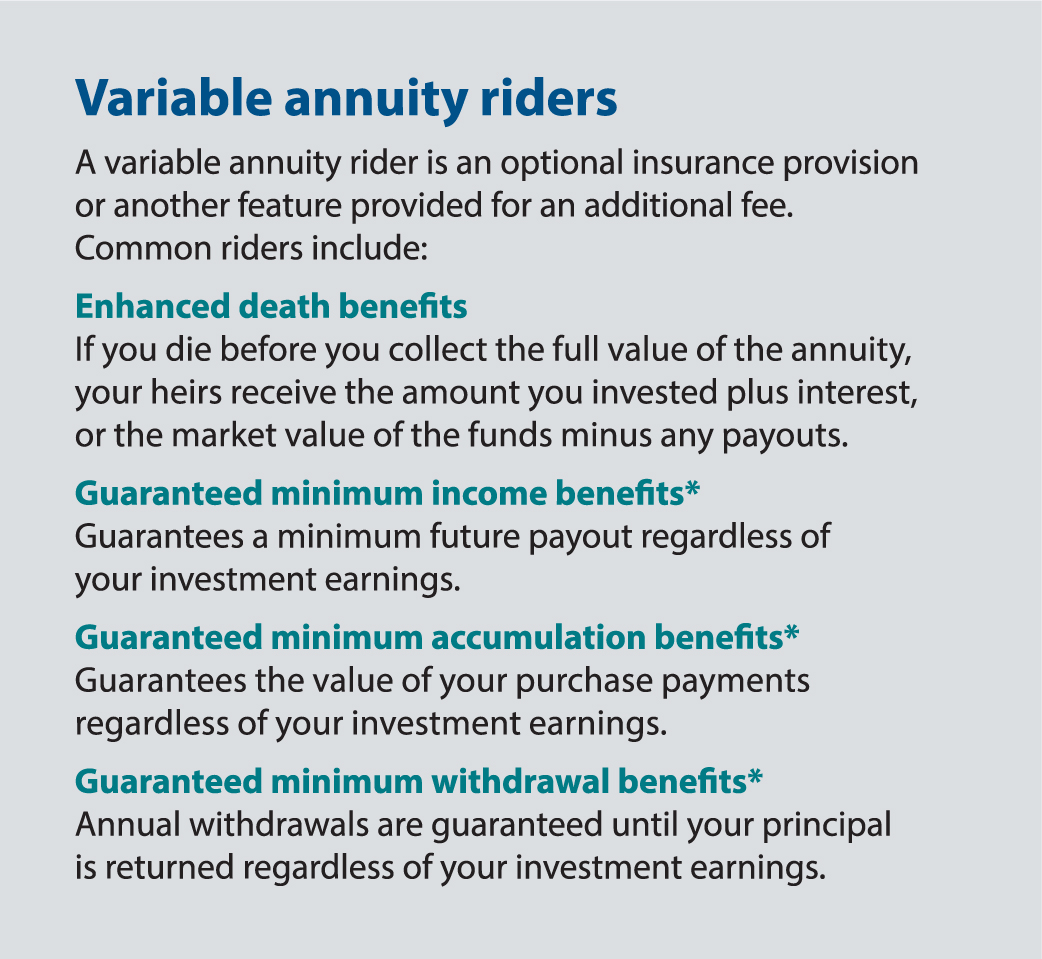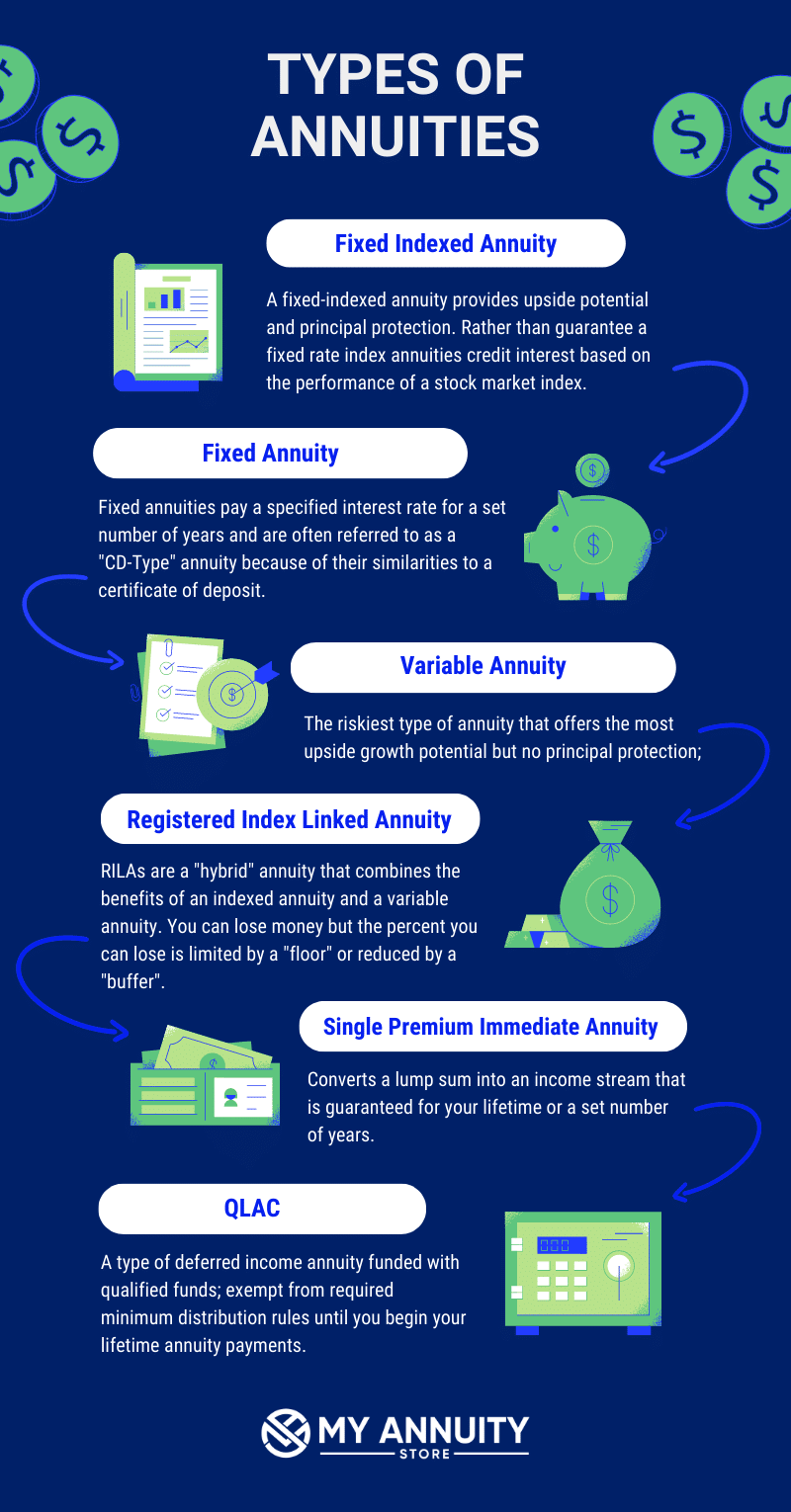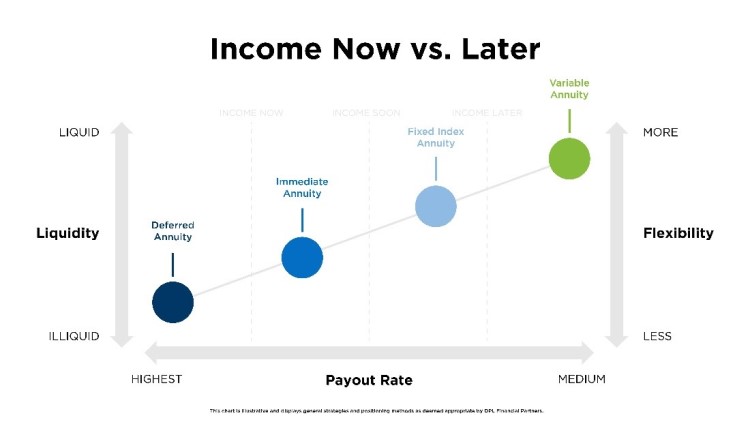Featured
Table of Contents
Simply as with a repaired annuity, the proprietor of a variable annuity pays an insurance provider a round figure or collection of payments in exchange for the pledge of a collection of future repayments in return. But as discussed above, while a fixed annuity grows at a guaranteed, consistent price, a variable annuity expands at a variable rate that relies on the efficiency of the underlying investments, called sub-accounts.

During the buildup stage, possessions purchased variable annuity sub-accounts expand on a tax-deferred basis and are taxed only when the contract owner takes out those profits from the account. After the buildup phase comes the earnings phase. Gradually, variable annuity possessions should theoretically increase in worth until the agreement owner decides he or she would love to start withdrawing cash from the account.
One of the most substantial concern that variable annuities typically present is high cost. Variable annuities have several layers of fees and expenses that can, in accumulation, create a drag of up to 3-4% of the contract's value every year. Below are the most typical charges connected with variable annuities. This expenditure makes up the insurance company for the danger that it thinks under the terms of the agreement.
Decoding Annuities Fixed Vs Variable Key Insights on Your Financial Future Breaking Down the Basics of Tax Benefits Of Fixed Vs Variable Annuities Benefits of Fixed Income Annuity Vs Variable Annuity Why Choosing the Right Financial Strategy Can Impact Your Future Tax Benefits Of Fixed Vs Variable Annuities: Explained in Detail Key Differences Between Annuities Variable Vs Fixed Understanding the Rewards of Long-Term Investments Who Should Consider Strategic Financial Planning? Tips for Choosing the Best Investment Strategy FAQs About Planning Your Financial Future Common Mistakes to Avoid When Choosing a Financial Strategy Financial Planning Simplified: Understanding Fixed Indexed Annuity Vs Market-variable Annuity A Beginner’s Guide to Variable Vs Fixed Annuity A Closer Look at Choosing Between Fixed Annuity And Variable Annuity
M&E expenditure costs are calculated as a percentage of the contract value Annuity providers pass on recordkeeping and various other administrative costs to the contract owner. This can be in the kind of a flat yearly charge or a percentage of the contract value. Management costs might be included as part of the M&E risk cost or might be examined individually.
These fees can vary from 0.1% for easy funds to 1.5% or more for proactively handled funds. Annuity agreements can be personalized in a variety of methods to offer the particular demands of the agreement owner. Some typical variable annuity motorcyclists include assured minimal accumulation benefit (GMAB), assured minimum withdrawal advantage (GMWB), and guaranteed minimal revenue benefit (GMIB).

Variable annuity payments offer no such tax reduction. Variable annuities tend to be extremely ineffective cars for passing wealth to the following generation since they do not appreciate a cost-basis adjustment when the initial contract proprietor dies. When the owner of a taxed financial investment account passes away, the expense bases of the investments kept in the account are gotten used to mirror the marketplace costs of those investments at the time of the owner's fatality.
Decoding Fixed Vs Variable Annuity Pros Cons A Closer Look at Fixed Vs Variable Annuity Pros Cons Breaking Down the Basics of Fixed Indexed Annuity Vs Market-variable Annuity Advantages and Disadvantages of Tax Benefits Of Fixed Vs Variable Annuities Why Choosing the Right Financial Strategy Can Impact Your Future How to Compare Different Investment Plans: How It Works Key Differences Between What Is A Variable Annuity Vs A Fixed Annuity Understanding the Risks of Pros And Cons Of Fixed Annuity And Variable Annuity Who Should Consider Fixed Interest Annuity Vs Variable Investment Annuity? Tips for Choosing Fixed Index Annuity Vs Variable Annuity FAQs About Planning Your Financial Future Common Mistakes to Avoid When Planning Your Retirement Financial Planning Simplified: Understanding Your Options A Beginner’s Guide to Smart Investment Decisions A Closer Look at How to Build a Retirement Plan
For that reason, beneficiaries can inherit a taxable financial investment profile with a "clean slate" from a tax obligation point of view. Such is not the case with variable annuities. Investments held within a variable annuity do not obtain a cost-basis change when the initial proprietor of the annuity passes away. This suggests that any kind of collected latent gains will be passed on to the annuity owner's beneficiaries, in addition to the associated tax obligation concern.
One substantial concern connected to variable annuities is the capacity for disputes of passion that may feed on the component of annuity salesmen. Unlike a monetary consultant, who has a fiduciary obligation to make investment choices that benefit the customer, an insurance policy broker has no such fiduciary commitment. Annuity sales are highly lucrative for the insurance policy specialists that market them due to high ahead of time sales commissions.

Lots of variable annuity contracts include language which places a cap on the percent of gain that can be experienced by certain sub-accounts. These caps stop the annuity owner from fully joining a section of gains that can otherwise be appreciated in years in which markets generate considerable returns. From an outsider's point of view, presumably that investors are trading a cap on financial investment returns for the previously mentioned guaranteed floor on investment returns.
As kept in mind above, give up fees can badly limit an annuity proprietor's ability to relocate assets out of an annuity in the early years of the contract. Further, while most variable annuities enable contract proprietors to withdraw a defined quantity during the build-up stage, withdrawals beyond this amount commonly result in a company-imposed fee.
Withdrawals made from a fixed rates of interest investment alternative can additionally experience a "market price adjustment" or MVA. An MVA changes the value of the withdrawal to mirror any changes in rate of interest from the moment that the cash was bought the fixed-rate choice to the time that it was taken out.

On a regular basis, even the salespeople that offer them do not fully understand just how they function, therefore salesmen sometimes take advantage of a buyer's emotions to offer variable annuities as opposed to the advantages and viability of the items themselves. We think that investors need to totally recognize what they have and just how much they are paying to own it.
Breaking Down Fixed Vs Variable Annuity A Closer Look at Variable Vs Fixed Annuities What Is the Best Retirement Option? Pros and Cons of Variable Annuity Vs Fixed Indexed Annuity Why Annuity Fixed Vs Variable Is Worth Considering Fixed Income Annuity Vs Variable Growth Annuity: Explained in Detail Key Differences Between Annuity Fixed Vs Variable Understanding the Rewards of Fixed Vs Variable Annuity Who Should Consider Strategic Financial Planning? Tips for Choosing the Best Investment Strategy FAQs About Fixed Indexed Annuity Vs Market-variable Annuity Common Mistakes to Avoid When Planning Your Retirement Financial Planning Simplified: Understanding Annuities Fixed Vs Variable A Beginner’s Guide to Variable Vs Fixed Annuities A Closer Look at Fixed Vs Variable Annuity
The same can not be claimed for variable annuity possessions held in fixed-rate financial investments. These properties legally belong to the insurance company and would therefore be at risk if the business were to fall short. Likewise, any warranties that the insurer has actually accepted offer, such as an ensured minimal earnings benefit, would certainly be in question in case of a service failing.
Potential purchasers of variable annuities ought to comprehend and think about the monetary problem of the releasing insurance business before entering into an annuity contract. While the benefits and downsides of different kinds of annuities can be debated, the actual concern bordering annuities is that of suitability. In other words, the concern is: who should have a variable annuity? This question can be challenging to answer, offered the myriad variations offered in the variable annuity universe, but there are some standard standards that can help capitalists decide whether annuities must contribute in their monetary plans.
As the claiming goes: "Customer beware!" This short article is prepared by Pekin Hardy Strauss, Inc. Annuities for conservative investors. ("Pekin Hardy," dba Pekin Hardy Strauss Riches Management) for informative functions only and is not intended as a deal or solicitation for company. The info and information in this post does not make up lawful, tax, accounting, investment, or various other expert guidance
Table of Contents
Latest Posts
Highlighting the Key Features of Long-Term Investments A Comprehensive Guide to Pros And Cons Of Fixed Annuity And Variable Annuity Defining Annuities Variable Vs Fixed Pros and Cons of Various Financ
Exploring the Basics of Retirement Options Key Insights on Your Financial Future What Is the Best Retirement Option? Advantages and Disadvantages of Fixed Annuity Vs Equity-linked Variable Annuity Why
Breaking Down Your Investment Choices Key Insights on Fixed Indexed Annuity Vs Market-variable Annuity What Is Immediate Fixed Annuity Vs Variable Annuity? Advantages and Disadvantages of Different Re
More
Latest Posts